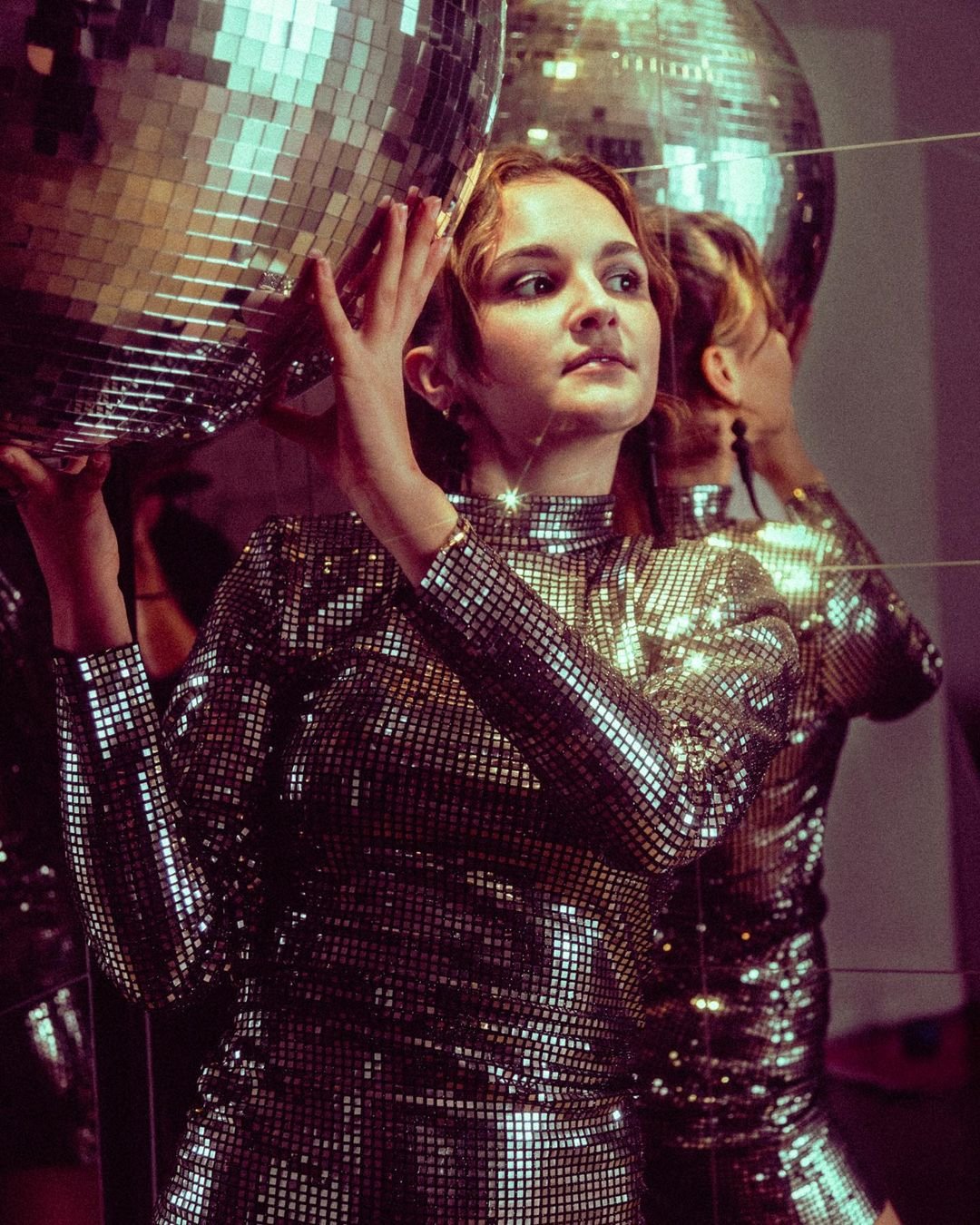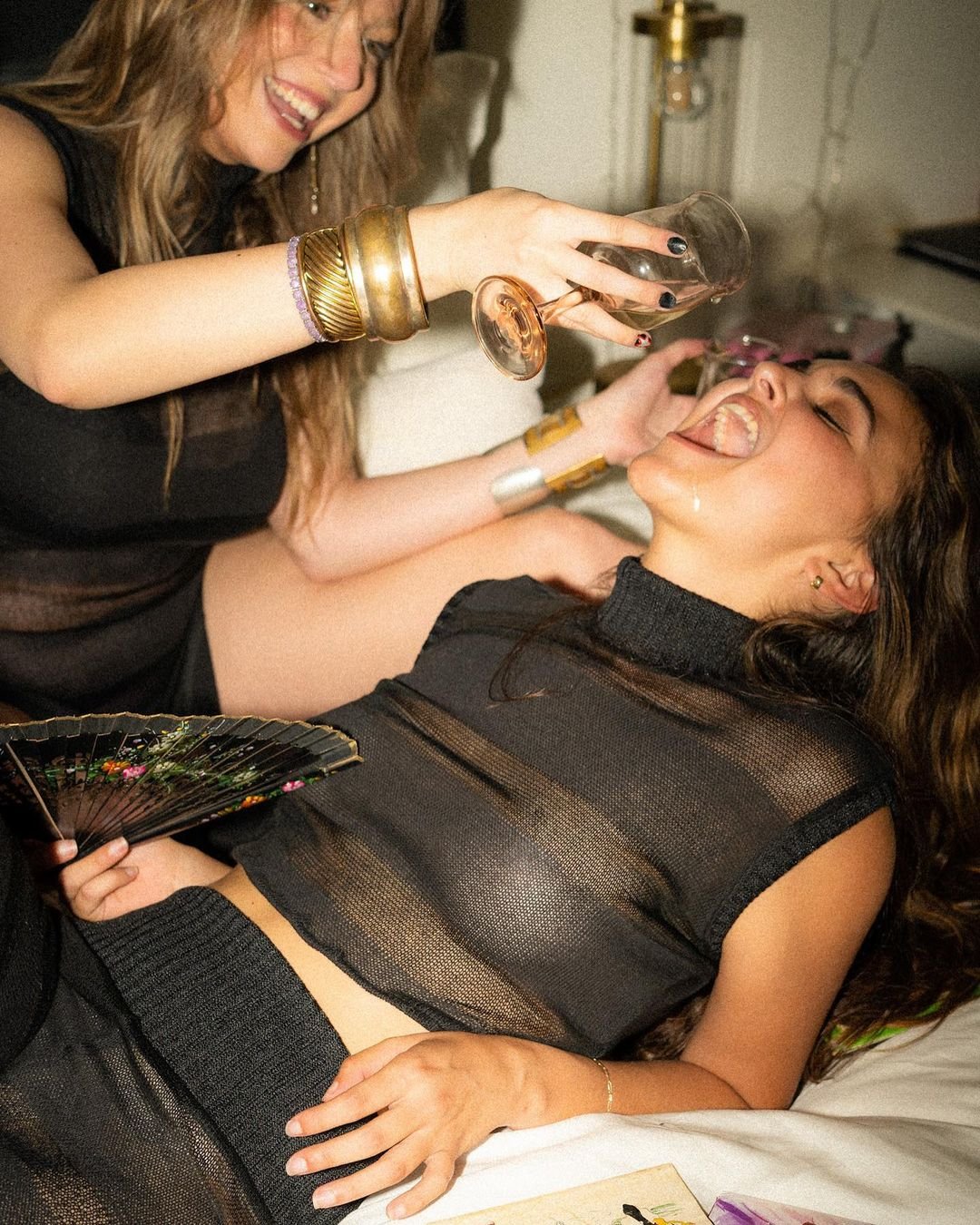Sustainable Baddie of the Week: Natalia Trevino Amaro
Sun: Libra Moon: Capricorn Rising: Gemini
Tailored clothing is an homage to the origins of garment making and the wearer's personal aesthetics. The tradition of wearing custom-made garments tailored to your body with your style in mind has fallen out of vogue. The shrinking of vocations related to custom clothing has strained our ability to cultivate personal style. As the creative force behind NTA, Natalia Trevino Amaro is embracing the made-to-order model, redefining fashion's purpose while invoking its essence as both a tactile experience and an observation of human expression.
For Trevino Amaro, slow fashion is an embodiment of the profound connection between the creator, the client, and the garment itself. Amid the clamor of mass production and fleeting trends, her slow fashion model thrives, manifesting in made-to-order and custom designs that foster connections with clients and her craft.
We first met Trevino Amaro last September during New York Fashion Week. She hosted her first NYFW sustainable runway to showcase her own original designs alongside six other sustainable designers. (It was one of the first runways that Sustainable Baddie was invited to attend and cover.) In her vision, fashion is a revival of the past - a return to a time when clothing was meticulously crafted to suit individual measurements, tastes, and lifestyles. A reminiscence of an era when each piece was a personal narrative woven into threads, and fashion was both an art to observe and an experience to embrace.
“It's really important to bring back the value of clothing so that people are more mindful when they're shopping and respect, not just the clothing itself, but the people behind it,” Trevino Amaro tells us.
A Midwest girly with an international upbringing, Trevino Amaro’s journey into the world of sustainable fashion was driven by a love for style, an awakening to the environmental repercussions of fast fashion, and an innate desire to connect with the essence of clothing. As a student at the Fashion Institute of Technology in New York City, her ideals began to align with her craft as conversations about sustainability and the issues surrounding fast fashion powered her mission to reshape the fashion landscape. As the pandemic shortened her education, it instead accelerated her career; she shifted her ideas into tangible designs by launching NTA.
With an eye for detail and an innate ability to blend comfort with sophistication, NTA crafts collections that resonate with those seeking an aesthetic that mirrors their values. Her design process departs from the conventional, with available fabric often acting as the driving force behind her creations. Instead of designing a piece and sourcing fabric, she will dream up a design based on the fabrics she has at hand. This approach, she believes, gives life to exquisite designs that celebrate the inherent beauty of the material.
Her distinctive approach lies in her dedication to made-to-order and custom designs, through which she brings the visions of her clients to reality. It's an intimate collaboration that brings personal narratives to life, allowing individuals to step into their most authentic selves. Like with any art form, an artist is limited by their own tastes. Custom orders allow space for experimentation; it’s an opportunity for her to explore uncharted territories and unveil new dimensions of her craft.
Most recently, NTA’s impact extends beyond her brand as she collaborates with fellow Swifties to bring their dreams to life for Taylor Swift's Eras Tour. Crafting custom outfits inspired by T. Swift’s tour ensembles, her creations (their attire) are integral to what has become a modern communion—seeing one’s favorite artist in the company of fellow super-fans.
“I'm able to have more of a one-on-one kind of connection with [my clients],” she says. “Seeing specific visions of theirs come to life is so rewarding…When they send you back a picture, and they're like, ‘This was like the greatest outfit I've ever worn.’” Her dedication emphasizes that fashion is not just about clothing; it's about enabling self-expression and fostering confidence.
Tailors and artisans dedicated their expertise to curating unique pieces that celebrated the wearer's identity, fostering a stronger connection between individuals, their wardrobes, and their experiences. Set against other factors, such as changing lifestyles and priorities, the shift towards fast fashion introduced mass production and standardized designs, often sacrificing the artistry and personal touch that defined traditional clothing creation methods. Custom tailoring was most recently prevalent during the early to mid-1900s, as tailors and artisans crafted bespoke garments to an individual's measurements and style preferences. This era celebrated the intricacies of handcrafted clothing, emphasizing the uniqueness of each piece and the strong connection between the wearer and their attire.
The transition to fast fashion gained momentum in the latter half of the 20th century. The origins of fast fashion can be traced back to the 1960s when retailers began adopting a more streamlined approach to design and production. The consumerist culture that emerged post-World War II, coupled with advancements in manufacturing and transportation, paved the way for brands to produce large quantities of clothing quickly and inexpensively. This marked a departure from the traditional tailoring methods prioritizing quality and individuality. As we approached the turn of the century, we also began to see the emergence of current normative lifestyle patterns; working a 9-5 schedule or more, the shrinking of support systems, and the outsourcing of daily tasks meant that tailoring and mending at home was no longer sustainable or affordable for most people.
The debate about whether sustainable fashion is an exclusive industry centers on the perception of affordability. However, it's crucial to recognize that the long-term benefits of sustainable fashion, such as reduced environmental impact and improved working conditions, outweigh the customer’s initial investment. Had clothing never been devalued by the fast fashion industry, consumers might have been more inclined to invest in fewer, higher-quality garments that stood the test of time. Trevino Amaro's mission to rekindle appreciation for the artistry in garment-making aligns with this sentiment. By focusing on craftsmanship and creativity, Amaro reminds us that fashion is an expression of human skill and ingenuity. As consumers become more conscious of their choices, there's hope for a shift away from the throwaway culture perpetuated by fast fashion and a return to a more thoughtful and sustainable approach to dressing.
If you’re trying to find the balance between defining your personal style, minimizing your consumption, and beginning your own design/tailoring journey, Trevino Amaro offers the following advice, “go through what you already have in your closet, and kind of audit it and see what pieces you like really lean to more, [and] which pieces you literally never gravitate towards,” she says. Analyzing the why of your high-rotation pieces can help you narrow down your true tastes. “Sewing-wise, I would also start with pieces in your closet. If there's anything you don't particularly love anymore… just try to upcycle things, try to switch them around, or deconstruct them to figure out how clothing works,” she adds. Overall, learning about personal style and sewing comes with a lot of trial and error. But sustainable baddies aren’t afraid of a little experimentation!
This year, we have the honor of collaborating with Trevino Amaro as she reimagines the format of the traditional runway show in favor of an interactive display. NTA x Sustainable Baddie will emphasize the connection between the garments and the sustainable baddies in attendance. "For this year, I wanted to have… more of an exhibit, where the models are standing around, and you can kind of walk through them and see the clothes up close, take pictures and really value the work a little bit more, while also just being able to socialize," she says.
This event’s design embodies the union of innovation and community-driven fashion. By shifting from the traditional runway to an interactive exhibit, she allows attendees to engage with her artistry on a personal level, absorb the intricate details, and appreciate the human effort that goes into every piece. Beyond aesthetics, NTA envisions her exhibit as a platform for building connections and nurturing a sustainable fashion community, where attendees are part of a movement rather than mere spectators. Her motivation to create community exchange during NYFW speaks to her belief that fashion is not a solitary endeavor.
As the spotlight continues to shine on Natalia Trevino Amaro's journey, her work remains a testament to the profound impact of fashion when it is crafted with intention, respect, and artistry. If you’re a sustainable baddie in the NYC area, join us on September 9th for an afternoon of sustainable fashion brought to you by Natalia Trevino Amaro, Noe Dresses by Noemie Jouas, Vaed by Veronica Arroyo, Atelier Vendetta, Cool Girl Clothes co., Meta Vocus, and Spilt Milk with jewelry by Blue Bone Jewelry. There will also be a pop-up from each of the featured designers for you to support and shop from! For us, it feels like a full circle to come back and be able to collaborate with designers who share our vision for the future of fashion. See you there, baddies!





